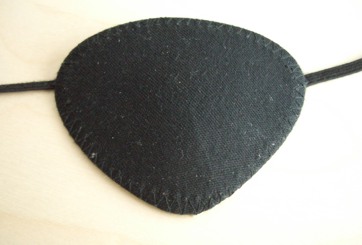Thanks to many movies and children’s story books, many people believe that a pirate would wear an eye patch to cover a missing eye.
However, it is now theorized that rather than being used as a cosmetic cover-up, the wearing of a patch was most likely related to being able to see – both above and below deck.

Pirates were constantly on the move. From above deck to below deck and vice versa; from daylight to near blackness, and then back to the sunshine. Doctor of Vision Science and Director of Oregon’s Pacific University Vision Performance Institute, Jim Sheedy, performed studies to investigate the sensitivity of the eye while exposed to different light.
Brief findings of these studies were disclosed to the Wall Street Journal, illustrating that it can “take up to 25 minutes” for the eyes to adapt from bright light to darkness, which “requires the regeneration of photo pigments”, whereas the eyes can adapt rapidly when changing from darkness to light.
According to Sheedy, it is more than likely that the more experienced pirates “wore a patch over one eye to keep it dark-adapted outside”. Consequently, when the pirate would head below deck, he was able to switch his patch to the outside eye and see easily in the darkness. This skill would be invaluable for fighting below deck and for attacking an unfamiliar ship during the night.

While there is no primary evidence to support the “pirate’s eye patch” theory as fact, there is no doubt that one-eye dark-adaption works and is useful. In 2007, MythBusters tested the proposition and concluded that such a system was indeed possible.
A lack of historical sources was the only reason why it could not be confirmed; however, there is also a lack of historical evidence confirming that pirates wore eyepatches regularly, Mental Floss reported.
In the 20th century, the dark-adaption concept was also introduced to military pilots, who began to wear a form of eye patch in an effort to protect them from “nuclear flash blindness”.

A military handbook for pilots maintains that “Even though a bright light may shine in one eye, the other will retain its dark adaptation if it is protected from the light.” It continues “…by simply closing [one eye]” adapting to the darkness after being exposed to a shining light is much easier than if both eyes had remained open.
Read another story from us: Famous pirate ships and their captains
Therefore, in order to retain “some degree of night vision,” the FAA recommends that “A pilot should close one eye while using a light”.
